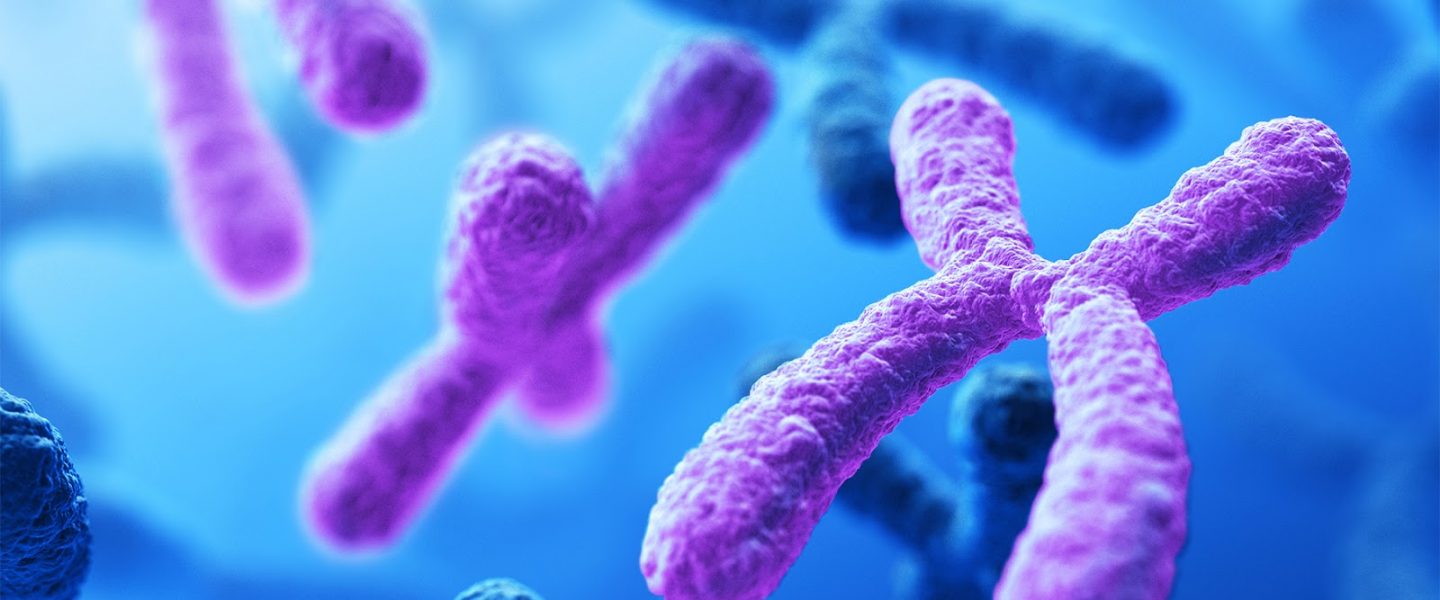A look at the genetic superiority of women.
We’ve seen, over the past year, that men have contracted COVID-19 at almost twice the rate of women. Is this just a coincidence, is there some cultural or behavioral reason, or is there something more medically profound at play?
According to our guest on this week’s WhoWhatWhy podcast, Dr. Sharon Moalem, M.D., Ph.D., women have a clear, genetically-based survival advantage. It begins immediately upon birth, and has been confirmed in every corner of the world.
According to Moalem, the cause is two-fold: it’s a case of male biological fragility coupled with the superiority of the female immune system. COVID-19 has brought all of this into bold relief.
While medical testing and drug research have historically failed to fully take into account the power of two X chromosomes (XX versus the male XY), we are now learning that the dosing, side effects, and efficacy of many drugs should be based on the gender of the patient. According to Moalem, even the COVID-19 vaccines should have been dosed differently for men and women, and we should have expected different reactions to the shot.
Moalem explains that gender differences have applications in the treatment of virtually every disease, from vision problems to colds to cancer. Indeed, gender differences may give rise to the ultimate customization of medicine, with men being recognized as clearly “the weaker sex” when it comes to survival.



Click HERE to Download Mp3
Full Text Transcript:
| Jeff Schechtman: | Welcome to the WhoWhatWhy podcast. I’m your host, Jeff Schechtman. As we mark women’s history month, International Women’s Day earlier this week, and yesterday, which was the International Day of Women and Girls in Science, we can’t help but think of the genetic differences between men and women. The COVID epidemic has ironically brought all of this into bold relief. In the current pandemic, we have seen men succumb to COVID-19 at far greater rates than women. A lot of theories have been expounded as to why, and most theories have to do with the disease itself and its inherent impact on the human body. The fact is though, that the reasons may be more fundamental, that they transcend the disease and are directly related to a deeper biological difference between men and women. Differences that have an application in the treatment of virtually every disease from colds to cancer, clearly the difference in chromosomes maybe the ultimate customization of medicine. |
| Jeff Schechtman: | We’re going to talk about that with my guest, Dr. Sharon Moalem. He’s an award-winning scientist, physician, and New York times bestselling author, and his latest work, which couldn’t come out at a more opportune time, is entitled The Better Half: On the Genetic Superiority of Women. Dr. Sharon Moalem, thanks so much for joining us on the WhoWhatWhy podcast. |
| Sharon Moalem: | Thanks so much for having me, Jeff. |
| Jeff Schechtman: | When we approach this subject, is it best to approach it from strictly a scientific perspective, or is there a cultural component that’s at play here as well? |
| Sharon Moalem: | Well, I think both have an impact on health outcomes. We know the power of changing one’s behavior when it comes to resisting diseases and for longevity. But I think that the emphasis for far too long has been on behavior and the cultural implications of behavior and their effects on our susceptibility to disease. I think this is really born out of the fact that we have been not so much as misinformed, but we just really misunderstood the fundamental differences when it comes to the biology of men and women. They begin very early on in life. We see that as we see that those females have a survival advantage from the first day they are born, more girls make it to their first birthday than boys everywhere we look around the world, even in cultures where girls are not the most favored sex. |
| Sharon Moalem: | So what I think really has happened as you mentioned in your opener with the coronavirus is just this basic unmasking of a fundamental biological fragility that males have compared to females. Although men may have more muscle mass, greater height and weight on average, that comes at a cost since they don’t have the two same sex chromosomes, they have an X and a Y. So fundamentally females, right from the get-go having two X chromosomes, one they inherited from their father, one they inherited from their mother, gives them an immense advantage in life. |
| Jeff Schechtman: | Doesn’t it also have some downside in that we see women much more susceptible, for example, to auto-immune diseases? |
| Sharon Moalem: | That’s correct, and the reason is twofold. First of all, females have, which in most part is for most of their life an advantage, they have a very aggressive immune system compared to men. Their immune systems are much more likely to attack an invader. It takes a lot less to get them off the so-called immunological couch, female immune cells to go and start attacking invaders. So that could come at a cost when the immune cells decide to target the body itself, which happens in auto-immunity. The other reason that more women are affected from auto-immunity has to do with the fact that all females actually are mosaics. They’re made up of two groups of cells, one using predominantly the X they got from their father and the other predominantly the X that they got from their mother. |
| Sharon Moalem: | So this mosaicism that females naturally have can predispose them to auto-immunity or friendly fire. When an immune cell is using one X, say the X from the father, and it encounters another cell in the body that’s using the X from the mother, it may think that that X is foreign and instigate an attack. Whereas I’m a genetic male, all my cells are XY, and they’re all identical. So my immune cells have less a chance or like a lower propensity to attack self just based on the fact that every one of my immune cells is fundamentally genetically identical to every other cell in my own body. |
| Jeff Schechtman: | Is there a consistency to all that you’ve been talking about as we look across different cultures? To what extent is there an epigenetic component that perhaps plays out differently in different social and cultural landscapes? |
| Sharon Moalem: | Well, I think what was really overwhelming for me as I took part in different clinical research projects over my career, and also as a physician, was this recurring theme that regardless where you look in the world, females have a survival advantage at every point in the life force, regardless of any type of behavior. Coming back to what I was talking about earlier, the easiest place really to isolate out biology away from culture is at the beginning of life. We see this immense survival that happens that even when a boy and girl are born into very challenging circumstances, say they lacked oxygen at the time of birth, boys always tend to struggle, not only have more risks for further infections at birth, but also to develop further complications later on in life from those challenges. It really seems that this fundamental survival advantage that females have is connected to the fact that historically from an evolutionary perspective, females, of course, and all mammals spend a lot of energy taking care of the young. |
| Sharon Moalem: | So it’s not just pregnancy, it’s the early years of life. So if one sex is to be advantaged genetically over the other, it makes sense from an evolutionary perspective for survival, ultimately of the species, to have the one sex that provides more care for their young to survive. For mammals that’s the female. We see the same pattern actually, but in reverse, when we look at birds because the male bird is the advantaged one, when it comes from a genetics perspective, because it inherits the equivalent of XX. So it inherits ZZ chromosomes. So when we look at male bird longevity, we see that male birds have increased longevity and many of the advantages that we find in female mammals. When we try to understand, well, why does this happen in the case of birds, researchers now have actually published an extensive study in the last year, showing that male birds can provide much from a caloric perspective to their young. So having one sex advantaged that helps the next generation survive, ultimately helps us species survive. |
| Jeff Schechtman: | While we talk about, and you write about how this impacts stamina and developmental issues and so many other areas, how does it play out psychologically? |
| Sharon Moalem: | Well, I’d say when we look at the organic functioning of the brain, the brain as a machine. When you have so many genes that are involved in the making and maintaining of the brain that are on the X chromosome. So the X chromosome contains about a thousand genes. Humans have about 20,000. One would say, well, why would having an extra 1,000 genes really give females that big of an advantage? Well, it turns out so many of the genes that are involved not only in immune function, but in the making a maintaining of a brain are on the X chromosome. So what that means for females, females really have an extra 1,000 copies of genes that they can dip into to build a very complex organ. The one explanation that I give in the book when I try to talk about females, not only not having disadvantages, but having advantages that males might not have, comes down to an example of using vision. |
| Sharon Moalem: | So to see color vision, humans have three genes, two of them are on the X. That’s why when we think about someone who’s colorblind, we typically think of a male because males only have one X. They don’t have another backup copy. So if one of those two genes on the X center of all the color vision is defective males go down from seeing 1 million colors, which is what an average person can see that can see colors, differentiate between them, and they go down to only seeing, being able to differentiate 30,000 colors. That’s an immense difference. |
| Sharon Moalem: | I was taught a course in medical school that females having this extra X chromosome is a backup. So if something’s wrong with genes on one X, they have a backup and they can supplant that. That’s why when we look at colorblindness, five to 10 percent of people of European descent, males are colorblind and only 0.1 percent of females because females have this extra X that they can rely on. But it doesn’t end there because it turns out that that extra X, females can use those extra genes, not just as a backup, but to supplant and improve their color vision. |
| Sharon Moalem: | It turns out we think that somewhere in the range of five to 20 percent of females have almost like a vision superpower; it’s called tetrachromatic vision. Instead of being able to differentiate between 1 million colors, as the average person with color vision can see, these females can see 100 million colors. So you can only imagine, we’re only now starting to understand what benefits do females have by having these extra copies of their genes, when it comes to neurological function, this is just an example when it comes to vision, and really we haven’t really even started to look to understand the impact of having this extra X chromosome. |
| Jeff Schechtman: | To the degree to which we don’t understand it fully, talk about the impact that you’re seeing it have with respect to diagnosis of disease and ultimately treatment. |
| Sharon Moalem: | Yes. When it comes to medicine and the basic differences between the sexes, outside of gynecology and obstetrics, it’s very minimal. So again, I’m going back to my own medical training. When I was taught certain doses of drugs to prescribe, we would never differentiate between the sexes. We were always taught this was a specific dose for an adult, or maybe some drugs we would adjust for the weight of the patient, but never for the sex. This goes back to the fundamental science, the basic research that led to drug development, where there was no requirement really to use males and females up until very recently. Even today, when we are developing new drugs and doing the preclinical part of the research where we’re using cells and animals, again, there’s no requirement to use males and females. So for many years we were kept really in the dark regarding the differences between the basic biology of men and women. |
| Sharon Moalem: | It’s only recently when certain drugs were noticed to have side effects in one sex over the other, that now we’re questioning whether this was such a good idea. The one drug that I talk about in my book that made a very big difference regarding when it comes to the amount of drugs and the sex that is prescribed to is a drug called Ambien, Zolpidem, which is a sleep aid. Normally we were taught the 10 milligram dose in the evening is what you would prescribe for an adult. Many of the women who were getting this dose were waking up the next day still feeling very groggy, still feeling sleepy. Enough women eventually complained to their physicians and physicians passed this information on, and the FDA reexamined whether or not that’s the right dose. They came to the conclusion that in fact women were being overdosed and that the correct dose for women is 5 milligrams. |
| Sharon Moalem: | Again, most, if not all of the drugs that now are approved, do not require this type of sex-specific dosing. To correct this, what we really have to do, we have to have clinical trials, that not only include men and women, but include enough males and females that we can actually find out what does the drug do in a male environment? What does it do in a female cellular environment? I think what will happen over time, we’ll discover that some drugs may not even work for one sex. Some drugs that are harmful for one sex may be helpful for another. But this is going to require a lot of work and some legislative changes, because as currently the FDA doesn’t require this preclinical research to include male and female cells and male and female animals. |
| Jeff Schechtman: | Going one step beyond that, as we look further and further to things like immunotherapy as treatment for cancer and similar kinds of diseases, it seems like it would have an even more profound impact there. |
| Sharon Moalem: | Yes. So there’s a new class of drugs that target cancer, called immune checkpoint inhibitors. What these drugs do, they unleash the power that is held back in reserve in the immune system, and that unleashing that extra vigor and aggressiveness allows the immune cells to better target cancers. So when they were developing these drugs, using, again, mainly male cells, male animals, when eventually they did clinical trials, what they started to discover was that these drugs work much better for males than they do for females. Why would that be the case? Again, it goes back to what I was saying previously, that in women, their immune system is already being stimulated by estrogens, estrogens stimulate the immune system. Whereas in men, sex hormones like testosterone inhibit the immune system. |
| Sharon Moalem: | Men then benefit from having a little bit of a nudge when it comes to their immune system to help them target cancer. This is likely also the reason why when we look at populations, we discover that from the US for example, there’s about 150,000 extra cases of cancers in males every year, which we, for the most part, attributed most of these sex differences to behavior. But now, as we start understanding that it’s not only that more men are diagnosed with cancers, more men don’t do well after they’ve been diagnosed. Again, it comes back down to the fact that there’s these basic fundamental immunological biological differences between the sexes. |
| Jeff Schechtman: | This is some of what we’re seeing in some of these COVID cases where we have this overactive immune system response and these kinds of cytokine storms. |
| Sharon Moalem: | It is. But I think what we’re actually seeing when we look everywhere around the world now is about a two to one increase male mortality when it comes to COVID-19. It’s probably, the reason for this is multifactorial. Again, men don’t have that aggressive immune response when it comes to viruses. It also though has to do with the fact that, as I mentioned earlier, females are mosaics and many of the genes on the X chromosome are involved in immune function. There’s a specific gene called TLR7 that exactly targets RNA viruses just like coronavirus. Naturally women are made up of cells that are using either the X from their father, the X from their mother, they have two different versions of TLR7 that can detect the COVID virus. So that’s a very big advantage where all my cells, immune cells, have exactly the same version of that gene. |
| Sharon Moalem: | So having an immune cells that are using different genes and having an overall aggressive immune system is a big advantage. Again, there’s stamina when it comes to surviving famines and pandemics. Throughout human history, the same pattern has always held true: men have come out as the biologically fragile sex. Interestingly enough, or unfortunately I should say, the same two to one pattern of increased male mortality is the same thing we’ve seen in other extreme events that have happened in history, including even recent events such as pandemics that have happened in Northern Europe, where many more men succumbed to the lack of food and the hardships that were involved in those events. |
| Jeff Schechtman: | To the extent we are coming to understand all of this, will it provide a framework to customize drugs and treatments specifically for men based upon what we’re learning in terms of how the female genetic makeup is more protective? |
| Sharon Moalem: | Really that’s my hope. It’s this idea that we finally come to the realization that from a biological perspective, men are not women and women are not men and that the sex chromosomes have this immense impact. So how can we start to study this? So on a very more superficial level and based on the extreme current need, there’s some trials underway and looking to see if we give men estrogens, could that then make a difference with our immune response in facing the COVID virus. But I think really what we’re going to start seeing is this reexamination and us going back to the lab and trying to understand both sexes, and then being able to compare one to the other. |
| Sharon Moalem: | We’ve talked about many things today and for the big cost, again, that’s the theme females face from having an aggressive immune system and cells using different X’s with propensities to auto-immunity; well, if men don’t get auto-immune to the same degree, is there something that we can learn from studying a male immune cells that make them less aggressive, but then we could apply to females and convince a female immune cells not to attack themselves or attack the body. |
| Sharon Moalem: | Again, coming back full circle, what else could we go back to understanding or researching the details of the female immune response when it comes to cancer surveillance within the own body attacking viruses and microbes, and how can we then train male bodies and cells to really take advantage of many of the female techniques that results in increased survival? |
| Jeff Schechtman: | To what extent is the medical community embracing this, understanding this and beginning, at least to incorporate it into day-to-day medicine? |
| Sharon Moalem: | I think unfortunate from a day-to-day medicine perspective, except the one or two drug exemptions that I mentioned, men and women are treated in the same way. Physicians don’t go into their drug formulary and look up which dose that they should be prescribing based upon sex. Because for the most part that information doesn’t exist for physicians. We don’t have that information disposable because the FDA didn’t require it when the drugs were approved. So in that sense, physicians really are at this point heading into a treatment scenario blind. But from a research perspective, I think because the mortality difference was so striking when it came to COVID that everywhere we looked around the world, it’s two to one, that every behavioral argument that was initially given for the reason for this increased male mortality — from the fact that men are dirty and don’t wash their hands, which I find offensive, to increased tobacco use amongst men, which from many different perspectives made initial sense when the data came out from China. |
| Sharon Moalem: | But then upon further investigation, it became clear that actually recent tobacco use might be protective when it comes to mortality and COVID-19 because it seems that in many of the countries that we have data, current smokers are underrepresented in the ICU and in deaths. All of these behavioral explanations for these increased male mortality, as they fell one by one, we were left with the stark realization that the reason that more men are unfortunately dying has to be biology. |
| Jeff Schechtman: | As we have more women coming online as doctors and as primary researchers, talk about the extent to which you think that will make a difference in how all of this gets addressed. |
| Sharon Moalem: | Well, I think having diversities of views and opinions always makes the research community more interesting. I think that the basic actual difference will only happen when we start requiring not just researchers are both sexes but cells and animals of both sexes, and this might sound pretty straight forward but the reason actually that there was resistance to including both sexes is that females are much more complex to study even at the cellular level. Part of the reason is when you’re dealing with a female mouse or a female human, the fact that half of our cells are using one X and the other half are using another and that proportion of cells is different everywhere you look in the body is really a level of complexity that we up until very recently didn’t even have the tools really to approach and investigate. |
| Sharon Moalem: | What that added was a level of variability in research results that made findings much more complex to interpret. It was much easier to use male animals, for example, where all the cells are identical, they’re all behaving in the same way, and the results are more reproducible. But again, if we’re just going to be studying men and male cells and animals, we’re doing a disservice, not only to women, but to men, because there’s many things that we could be learning from studying female cells and female animals, then that we can apply and help men as well. |
| Jeff Schechtman: | One of the areas that this is relevant particularly right now, and you write about this, is in reaction to vaccines. |
| Sharon Moalem: | Yes. Again, coming back to the basic immune responses and the differences between the sexes, when average men and women get a vaccine women of course report more side effects. So for many years, it was just thought that women are much more vocal. First of all, more women tend to see their doctors on a regular basis. What I was taught in medical school was that women will be forthright and will complain and tell you exactly what’s wrong. But in reality, actually, what was happening, women were experiencing more side effects because they were reacting by design to the vaccine. They have a more aggressive immune response after the vaccination, and that’s why they were getting the side effects. Their body was taking the shot that they were given seriously and they were beginning to produce antibodies and the cells necessary to retain a memory of that infection so that later on in life when they’re exposed to it, they were ready for an attack. |
| Sharon Moalem: | On the other hand, you have the male immune response, which at times is not vigorous. As I mentioned earlier, men’s immune cells are much lazier. It takes a lot of more energy to get them off that immunological couch, so to speak. That’s why many men not only are not speaking about side effects, they weren’t actually experiencing them because for many men, their bodies were actually ignoring the vaccinations or not taking them seriously. So from a practical perspective, what this means that we’re discovering now is that for a lot of vaccinations, it could be that men actually require a higher dose of a vaccine to get a response and women may require a lower one. Again, the more we study the basic fundamental immunological responses between the sexes, the better we are to help them both. |
| Jeff Schechtman: | Finally, Doctor, how serious is all of this being taken now in medical schools and in research hospitals and really in the medical community that’s looking at these kinds of issues? |
| Sharon Moalem: | I think we’re very early to have some practical changes to happen, but I’m an optimist, I see many academic centers opening up either new divisions or new positions to look at the sex effects and the gender effects when it comes to health outcomes. Because the realization is that these effects have an incredible impact when it comes to longevity and I think if anyone was trying to make an argument regarding their importance, the unfortunate pandemic that we’ve experienced really has made that clear — men and women are not the same. |
| Sharon Moalem: | We shouldn’t be treating them in the same way. We shouldn’t be giving them the same drugs at the same doses because our basic biology is different. Of course, we’re more similar than we are dissimilar, but the differences are crucial. I think this, again, this realization — looking at the two to one mortality when it comes to COVID-19 everywhere we look around the world — has really brought home the need and I think the impetus for us to move forward to really start not just treating men and women differently, but to dig down deeper to understand these basic important biological differences. |
| Jeff Schechtman: | Dr. Sharon Moalem, I thank you so much for spending time with us here on the WhoWhatWhy podcast. |
| Sharon Moalem: | Thanks so much for having me, Jeff. |
| Jeff Schechtman: | Thank you. And thank you for listening and for joining us here on radio WhoWhatWhy. I hope you join us next week for another radio WhoWhatWhy podcast, I’m Jeff Schechtman. If you liked this podcast, please feel free to share and help others find it by rating and reviewing it on iTunes. You can also support this podcast and all the work we do by going to WhoWhatWhy.org/donate. |
Related front page panorama photo credit: Adapted by WhoWhatWhy from New Jersey National Guard / Flickr (CC BY-ND 2.0).



